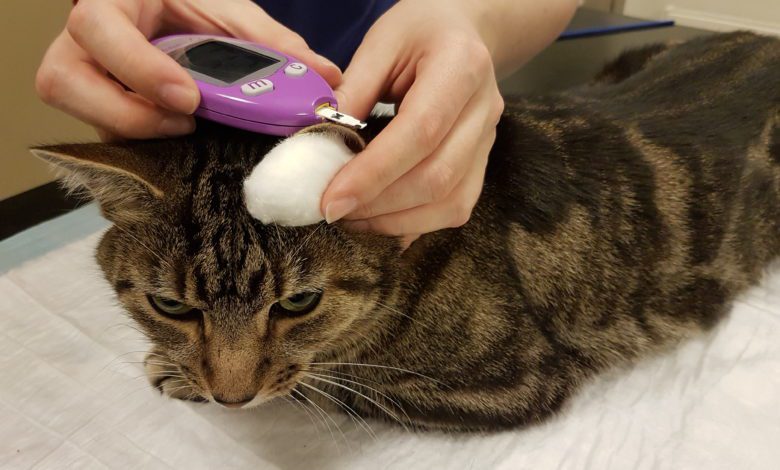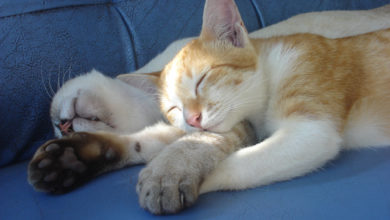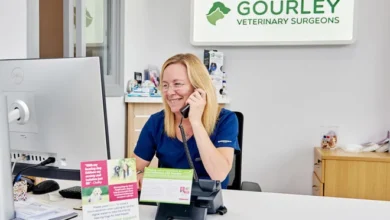Monitoring diabetes in cats and dogs during the Covid Crisis
Ruth Gostelow, Lecturer in Small Animal Internal Medicine

Royal Veterinary College clinicians and researchers have long been at the forefront of advancements in the understanding of canine and feline diabetes mellitus, as well as improvements in the way these conditions are managed. Dr Ruth Gostelow is a clinician, researcher and teacher at the RVC and has a particular interest in endocrine diseases. This includes the use of novel monitoring methods for diabetes mellitus, including the RVC Pet Diabetes App and the use of flash glucose monitoring systems. In this article she talks about the use of technology for diabetes monitoring, which can be particularly valuable during the COVID-19 era.
Diabetes mellitus is a common hormonal disease in dogs and cats. In most cases, diabetic pets require life-long therapy with injectable insulin, and diabetic cats also benefit from dietary carbohydrate restriction. Diabetic pets also require careful long-term monitoring, which often involves regular visits to veterinary practices. However, such visits might not always be possible during the current pandemic due to owners shielding or being reluctant or unable to travel far, or due to decreased practice opening hours, as we saw implemented during the first lockdown phase.
Although visits to veterinary practices might have been disrupted, there are many ways in which an owner can monitor their pet’s diabetic control at home and provide useful information remotely to their veterinarian. The severity of a pet’s clinical signs of diabetes (increased thirst and urination, weight loss and reduced activity level) are the most important indicator of a pet’s diabetic control –and owners are often the best judge of how these vary day-to-day with their pet.
Technology can be of use too. Home blood glucose monitoring is an extremely effective way of monitoring a pet’s response to insulin therapy, especially in cats. Home blood glucose monitoring is performed using a handheld glucometer and a tiny ear or paw prick blood sample (See Figure 1). This technique is very achievable by pet owners, although is probably underused. The results of home blood glucose curves can then be shared with the pet’s veterinary surgeon, and treatment recommendations made based on that data and other findings, such as clinical signs.
The RVC Pet Diabetes App (Figs 2a and 2b) is a convenient way for owners to store data on their pet’s diabetic control, including the results of home blood glucose curves, which can then be downloaded to form a comprehensive progress report that can be shared with their veterinary surgeon. The App also gives access to the RVC diabetes clinical scoring system for monitoring diabetic clinical signs, and the RVC’s unique pet diabetes quality of life survey (the DIAQoL-pet), which assesses how diabetes mellitus is affecting the quality of life of pets and their owners. This could be particularly relevant during the current times, as mentioned below.
An alternative method of long-term glucose monitoring at home is continuous “flash” glucose monitoring. This technique is often reserved for more complicated diabetes cases, where blood glucose control varies day-to-day, or where handheld glucometers can’t be used. In flash glucose monitoring, an adhesive sensor is applied to the pet’s skin and takes frequent measurements of the pet’s tissue glucose concentration, without the need for any blood samples (Figure 3). The sensor can then be swiped with a handheld scanner or specific smartphone App and will show the pet’s current glucose value and also download the last eight hours of glucose readings. These devices can stay in place for up to 14 days and can therefore provide very comprehensive, long glucose curves without the need for frequent blood sampling.
Finally, caring for a diabetic pet can place an emotional burden on pet owners due to the cost of care, worries about complications, and the need to inject their pet daily. These worries can heighten during the isolation of lockdowns, and the uncertainties created by the current pandemic. We therefore urge pet owners to let their veterinarian know if they are finding caring for a diabetic pet especially challenging during these unusual times.













